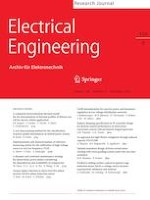14-09-2022 | Original Paper
A composite network model for load-independent output and near unit power factor in WPT system
Published in: Electrical Engineering | Issue 6/2022
Log inActivate our intelligent search to find suitable subject content or patents.
Select sections of text to find matching patents with Artificial Intelligence. powered by
Select sections of text to find additional relevant content using AI-assisted search. powered by
